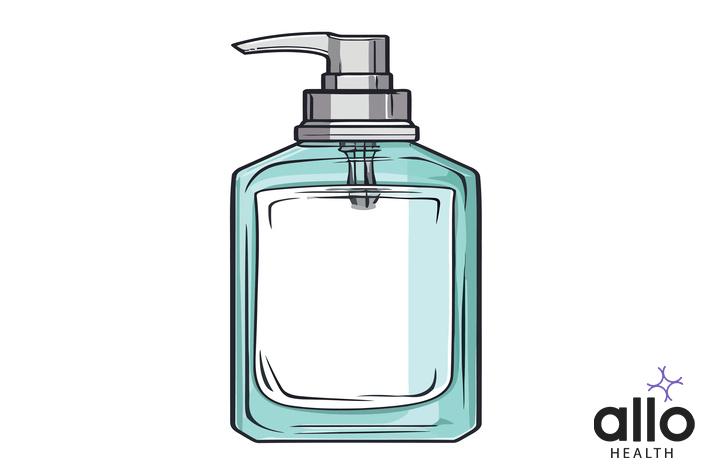What Is Phimosis Treatment Cream?

Allo Health is dedicated to personalized well-being, offering support and trusted information tailored to individual health goals. The platform emphasizes human-generated content, led by a distinguished medical team of experts, including physicians and sexual health specialists. Their commitment to credibility involves rigorous fact-checking, authoritative research, and continuous updates to ensure accurate, up-to-date information. Allo Health's unique approach goes beyond conventional platforms, providing expert-led insights and a continuous commitment to excellence, with user feedback playing a crucial role in shaping the platform's authoritative voice.

Dr Dodda Basavaraj did his MBBS from Vijayanagara Institute Of Medical Sciences, Ballari . His domain of interest always lied in obstetrics , gynaecology and sexual health. He has worked as Medical officer, Tele-consultation doctor at tertiary and primary health care sectors in Karnataka . He believes strongly in medical practice which is evidence based, non-judgemental and patient centric.
Why This Was Upated?
Our experts continually monitor the health and wellness space, and we update our articles when new information became available.
Updated on 13 September, 2023
- Article was updated as part of our commitment to diversity, equity, and inclusion.

"The following blog article provides general information and insights on various topics. However, it is important to note that the information presented is not intended as professional advice in any specific field or area. The content of this blog is for general educational and informational purposes only.
Book consultation
The content should not be interpreted as endorsement, recommendation, or guarantee of any product, service, or information mentioned. Readers are solely responsible for the decisions and actions they take based on the information provided in this blog. It is essential to exercise individual judgment, critical thinking, and personal responsibility when applying or implementing any information or suggestions discussed in the blog."
Phimosis is a condition in which the foreskin of the penis is too tight to be pulled back over the head, or glans, of the penis. While it is common in infants and young boys, it can also affect adult males. This can cause discomfort and pain, making it difficult to maintain personal hygiene and engage in sexual activity. Fortunately, there are several effective treatments available, including phimosis treatment creams that can help to alleviate the symptoms of phimosis.
What is Phimosis And How To Identify It?
Phimosis is a medical condition that occurs in males when the foreskin of the penis cannot be fully retracted over the glans (head) of the penis. It is a relatively common condition in young boys and infants, but it can also affect older males, including adolescents and adults. Phimosis can be physiological (normal and expected in infants) or pathological (abnormal and concerning in older individuals). Let’s delve into more detail about the types and identification of phimosis:
-
Physiological Phimosis: In newborns and young boys, the foreskin is often tight and adhered to the glans. This is a normal and expected condition, and it gradually resolves with age. During infancy and early childhood, the foreskin should not be forcibly retracted, as doing so can cause harm and lead to complications. By the age of 3 to 5, many boys will have a fully retractable foreskin, but it can take longer for some boys.
-
Pathological Phimosis: Pathological phimosis occurs when the foreskin remains non-retractable beyond the age when it should have naturally resolved (typically by adolescence). It can also occur in adult males who previously had a retractable foreskin but develop a condition that causes the foreskin to become tight and unable to retract.
Identifying Phimosis: The identification of phimosis involves assessing whether the foreskin can be retracted or not. Here’s how it is typically determined:
-
Infants and Young Boys: In newborns and young boys, phimosis is considered normal and usually resolves on its own as the child grows. Parents or caregivers should not forcibly try to retract the foreskin in infants, as this can lead to injuries and scarring. Gentle cleaning of the external genitalia with water during bath time is sufficient.
- Adolescents and Adults: Pathological phimosis in older males can cause discomfort, difficulty urinating, and concerns with hygiene. Identifying phimosis in adolescents and adults involves:
-
- Visual Examination: The inability to retract the foreskin to expose the glans during an erection or when the penis is flaccid can be a sign of phimosis. The foreskin may appear tight, swollen, or constricted.
- Pain or Discomfort: Patients with phimosis might experience pain or discomfort when trying to retract the foreskin or during sexual activity.
- Urinary Concerns: Phimosis can cause difficulties in passing urine, leading to a weak or spraying stream.
- Infections and Balanitis: Tight foreskin can trap bacteria and moisture, leading to infections, inflammation of the glans (balanitis), and unpleasant odor.
Common Causes of Phimosis in Men
Phimosis in men can be caused by various factors, ranging from normal developmental changes to medical conditions. Below are some common causes of phimosis:
-
Physiological Phimosis: As mentioned earlier, physiological phimosis is the natural condition in newborns and young boys where the foreskin is tightly adhered to the glans. This is considered normal and expected during early childhood, and it usually resolves on its own as the child grows older. In this case, there is no underlying medical issue causing the tightness, and gentle care and regular hygiene are sufficient.
-
Scarring or Adhesions: Sometimes, the foreskin may become adhered to the glans due to scarring or adhesions resulting from previous infections, inflammations, or injuries to the genital area. These adhesions can prevent the foreskin from retracting properly, causing phimosis.
-
Balanitis: Balanitis is an inflammation of the glans penis, often caused by poor hygiene, infections (bacterial or fungal), or allergic reactions. The inflammation can lead to swelling and scarring of the foreskin, contributing to phimosis.
-
Infections and Inflammatory Conditions: Certain infections and inflammatory skin conditions can lead to swelling, thickening, and tightening of the foreskin. For example, lichen sclerosus is a chronic skin disorder that can affect the genital area and cause scarring, leading to phimosis.
-
Recurrent Balanoposthitis: Balanoposthitis is the inflammation of both the glans and foreskin. When this condition occurs frequently or becomes chronic, it can result in scarring and phimosis.
-
Injury or Trauma: Trauma to the genital area, such as accidents or aggressive handling, can cause scarring and adhesions that lead to phimosis.
-
Uncontrolled Diabetes: Poorly controlled diabetes can cause frequent and severe infections, leading to inflammation and scarring of the foreskin, which may contribute to phimosis.
-
Sexually Transmitted Infections (STIs): Some STIs, particularly genital herpes and syphilis, can cause ulcerations and scarring of the foreskin, potentially leading to phimosis.
-
Balanitis Xerotica Obliterans (BXO): BXO is a rare, chronic, and progressive inflammatory condition that affects the genital area, leading to scarring and phimosis. The exact cause of BXO is unknown.
-
Preputial Adhesions: Preputial adhesions occur when the inner lining of the foreskin remains attached to the glans as a result of incomplete separation during development. These adhesions can hinder foreskin retraction.
Different Types Of Phimosis
Phimosis can be categorized into different types based on its severity and underlying causes. Below are the main types of phimosis:
-
Physiological Phimosis: Physiological phimosis is the natural and normal condition seen in newborns and young boys. At birth, the foreskin is usually tightly adhered to the glans, and this helps protect the delicate glans from irritation and infection. Over time, as the child grows and experiences hormonal changes, the foreskin gradually separates from the glans, allowing for easy retraction. By the age of 3 to 5, many boys will have a fully retractable foreskin, but it can take longer for some boys. Physiological phimosis does not usually require medical intervention, and the foreskin should never be forcibly retracted during infancy.
- Pathological Phimosis: Pathological phimosis refers to the condition where the foreskin remains non-retractable beyond the age when it should have naturally resolved. Pathological phimosis can occur due to various factors and is more concerning than physiological phimosis. Here are the different types of pathological phimosis:
-
- Simple Phimosis: In this type of phimosis, the foreskin is tight and cannot be retracted over the glans. There is no inflammation or scarring, and it may not cause significant symptoms or complications.
- Balanitis Xerotica Obliterans (BXO): BXO is a chronic and progressive inflammatory condition that affects the genital area. It leads to the development of white, thickened patches on the foreskin and glans, causing scarring and constriction of the foreskin. BXO is considered a more severe form of phimosis and requires medical attention.
- Recurrent Balanoposthitis-Induced Phimosis: Balanoposthitis is the inflammation of both the glans and foreskin. If this condition occurs frequently or becomes chronic, it can lead to scarring and phimosis.
- Traumatic Phimosis: Trauma or injury to the genital area can cause scarring and adhesions that prevent the foreskin from retracting properly, leading to traumatic phimosis.
- Inflammatory Phimosis: Infections or inflammatory conditions of the genital area, such as balanitis or lichen sclerosus, can cause swelling, scarring, and phimosis.
- Cicatricial Phimosis: Cicatricial phimosis refers to phimosis caused by scarring and narrowing of the foreskin. This scarring can result from previous infections, injuries, or skin conditions.
Treating Phimosis
Phimosis is a condition in males where the foreskin of the penis is too tight and cannot be pulled back over the glans (head) of the penis. This can lead to discomfort, pain, difficulty in urination, and an increased risk of infections. Treatment for phimosis depends on its severity, the age of the individual, and other individual factors. Here are various approaches to treating phimosis:
-
Topical Steroid Creams: For mild cases of phimosis, especially in children, a topical steroid cream (such as betamethasone or hydrocortisone) may be prescribed. Applying the cream to the tight area can help to reduce inflammation and loosen the foreskin, making it easier to retract.
-
Stretching Exercises: In cases where the foreskin is not too tight, but still poses a concern, a healthcare provider may recommend gentle stretching exercises. The person can perform these exercises daily, using their fingers to gradually stretch the foreskin opening over time.
-
Preputioplasty: This is a minor surgical procedure that involves making a small incision in the tight foreskin to widen the opening. Unlike circumcision, preputioplasty preserves the foreskin. It is often recommended for mild to moderate phimosis.
-
Dorsal Slit: This procedure involves making a vertical incision on the tight foreskin, which helps to release the constriction. It is typically used in cases where other treatments have not been effective.
-
Circumcision: In severe cases of phimosis that do not respond to other treatments, or if recurrent infections occur, circumcision may be recommended. Circumcision is the surgical removal of the foreskin and is considered a definitive treatment for phimosis. It is important to note that it is irreversible.
Advantages of Using Topical Creams For Treating Phimosis
Using topical creams, specifically topical steroid creams, for treating phimosis can offer several advantages. These creams contain corticosteroids, which are potent anti-inflammatory medications. When applied correctly, they can be an effective non-invasive option for managing phimosis. Here are some of the advantages of using topical creams for treating phimosis:
-
Non-Invasive Treatment: Topical creams provide a non-invasive approach to treating phimosis, especially in cases where the condition is mild or moderate. This means there is no need for surgical intervention, reducing the risks associated with more invasive procedures.
-
Promotes Foreskin Stretching: The primary mechanism of action of topical steroid creams is to reduce inflammation in the tight area of the foreskin. This anti-inflammatory effect helps to soften the skin and make it more pliable, facilitating stretching of the foreskin over time.
-
Avoids Surgery: For many men, the prospect of surgical procedures can be intimidating or worrisome. Using topical creams can be a preferred option as it avoids the need for surgical intervention, potentially reducing anxiety related to treatment.
-
Suitable for Children: Phimosis is relatively common in young boys. Topical steroid creams are often the first-line treatment recommended for pediatric patients with phimosis because they are less invasive than surgical options like circumcision or preputioplasty.
-
High Success Rate: When used as prescribed and under medical supervision, topical steroid creams have shown a high success rate in improving the flexibility of the foreskin and allowing it to be retracted comfortably. Studies have demonstrated significant improvement in phimosis cases treated with topical creams.
-
Minimal Side Effects: When used as directed, topical steroid creams usually have minimal side effects. Some individuals may experience mild skin irritation or redness at the application site, but serious adverse effects are rare.
-
Affordable and Widely Available: Topical steroid creams are relatively affordable and accessible. They are commonly available in pharmacies and can be obtained with a prescription from a healthcare provider.
-
Preservation of Foreskin: Using topical creams can preserve the foreskin, which is a sensitive and functional part of the penis. Preserving the foreskin can maintain natural sexual sensitivity and function, which some individuals may prefer.
Top 10 Phimosis Treatment Creams Used

Here are a few topical creams that were commonly used for treating phimosis:
-
Topical Betamethasone Cream: Betamethasone is a corticosteroid cream that has anti-inflammatory properties, making it effective for reducing inflammation and softening the tight foreskin.
-
Hydrocortisone Cream: Hydrocortisone is another type of corticosteroid cream that can be used to treat mild to moderate cases of phimosis by reducing inflammation.
-
Beclomethasone Cream: Beclomethasone is a corticosteroid cream that is sometimes used for phimosis treatment to help loosen the tight foreskin.
-
Mometasone Cream: Mometasone is a potent corticosteroid cream that may be prescribed for more severe cases of phimosis.
-
Clobetasol Cream: Clobetasol is a high-potency corticosteroid cream that can be used for severe phimosis cases where other treatments have not been effective.
-
Lidocaine Cream: Lidocaine is a topical anesthetic cream that may be used in conjunction with corticosteroid creams to reduce discomfort during stretching exercises.
-
Clotrimazole Cream: Clotrimazole is an antifungal cream that may be prescribed if phimosis is caused or complicated by a fungal infection.
-
Mupirocin Cream: Mupirocin is an antibiotic cream that may be used if there is a bacterial infection associated with phimosis.
-
Tacrolimus Ointment: Tacrolimus is an immunosuppressive ointment that may be used in certain cases of phimosis, particularly if there are signs of an autoimmune condition.
-
Gentamicin Cream: Gentamicin is an antibiotic cream that may be used in combination with corticosteroids for cases of phimosis with bacterial infection.
How to Use Phimosis Treatment Creams Safely and Effectively
Using phimosis treatment creams safely and effectively is crucial to ensure proper healing and to minimize the risk of complications. Here are the steps to use phimosis treatment creams in detail:
-
Consult a Healthcare Professional: Before using any phimosis treatment cream, it is essential to consult a healthcare professional, such as a urologist or a general practitioner. They will properly diagnose the condition and recommend the most suitable treatment, including the appropriate cream and its strength.
-
Wash Hands and Clean the Area: Before applying the cream, thoroughly wash your hands with soap and water to prevent introducing any bacteria or contaminants to the area. Additionally, gently clean the penis and foreskin with mild soap and warm water. Pat the area dry with a clean towel.
-
Read the Instructions: Carefully read and follow the instructions provided with the cream. Pay attention to the recommended dosage, frequency of application, and any precautions or warnings.
-
Apply the Cream Gently: Take a small amount of the cream as prescribed by your healthcare provider. Gently apply the cream to the tight area of the foreskin. It is essential to use only the prescribed amount to avoid potential side effects.
-
Massage or Stretch the Foreskin (if instructed): Depending on the type of cream and your healthcare provider’s recommendations, you may be instructed to gently massage or stretch the foreskin after applying the cream. This helps to facilitate the absorption of the cream and the stretching of the foreskin.
-
Avoid Contact with the Urethra and Glans: When applying the cream, take care not to let it come into direct contact with the urethral opening (the opening through which urine passes) or the glans (head) of the penis.
-
Avoid Abrasive or Rough Movements: Be gentle with the foreskin during and after the application of the cream. Avoid pulling or retracting the foreskin forcefully, as this may cause further irritation.
-
Wash Hands After Application: After applying the cream, wash your hands thoroughly to remove any residue. This helps to prevent unintentional transfer of the cream to other areas.
-
Continue Treatment as Prescribed: Stick to the treatment plan prescribed by your healthcare provider. If the cream needs to be applied for a specific duration or frequency, ensure that you follow these instructions diligently.
-
Attend Follow-up Appointments: If your healthcare provider has scheduled follow-up appointments, attend them as scheduled. This allows them to monitor your progress and make any necessary adjustments to the treatment plan.
-
Report Any Adverse Reactions: If you experience any unexpected or concerning side effects while using the cream, such as severe irritation, redness, swelling, or allergic reactions, stop using the cream immediately, and contact your healthcare provider.
Frequently Asked Questions
(1) How To Apply Phimosis Cream?
To apply phimosis treatment cream safely, first, wash your hands thoroughly with soap and water. Clean the penis and foreskin gently with mild soap and warm water, and pat the area dry. Take the prescribed amount of cream and apply it gently to the tight area of the foreskin, avoiding contact with the urethra and glans. Follow your healthcare provider’s instructions on massaging or stretching the foreskin, if applicable. Be gentle and avoid rough movements. Wash your hands after application and continue the treatment as prescribed. Attend follow-up appointments and report any adverse reactions.
(2) Can I use any over-the-counter cream for phimosis?
It is not recommended to use over-the-counter creams for phimosis without consulting a healthcare professional. Over-the-counter creams may not be suitable or effective for treating phimosis. Always consult a doctor for proper diagnosis and to get a prescription for the most appropriate treatment cream based on the severity of your condition.
(3) How long does it take for phimosis treatment cream to work?
The time it takes for phimosis treatment cream to work varies depending on the individual’s condition and the severity of phimosis. In mild cases, improvement may be seen within a few weeks of regular use. More severe cases may require several weeks to months of consistent application before noticeable progress occurs. It’s essential to follow the prescribed treatment plan and attend follow-up appointments to monitor progress.
(4) Can phimosis treatment cream cure phimosis completely?
Phimosis treatment cream can be effective in many cases, especially in mild to moderate situations. The success of the treatment depends on individual factors and the cream’s suitability for the specific case. In some cases, especially severe or chronic phimosis, surgical interventions like preputioplasty or circumcision may be required to achieve a complete cure.
(5) Are there any side effects of using phimosis treatment cream?
Phimosis treatment creams may cause mild side effects, such as skin irritation, redness, or itching at the application site. These side effects are usually temporary and resolve on their own. If you experience severe irritation, allergic reactions, or any other concerning side effects, stop using the cream immediately, and seek medical advice from your healthcare provider.
(6) Can I use phimosis treatment cream for my child with phimosis?
Yes, phimosis treatment creams can be used for children with phimosis. It is crucial to consult a pediatrician or a healthcare professional before using any medication on a child. The doctor will assess the severity of the phimosis and recommend the most appropriate treatment, which may include topical creams, stretching exercises, or other interventions suitable for children.
(7) What should I do if the phimosis treatment cream is not working?
If you have been using the phimosis treatment cream as prescribed and do not notice any improvement or experience worsening symptoms, it’s essential to contact your healthcare provider. They may reassess your condition and consider alternative treatment options, such as a higher-strength cream, a different type of medication, or a surgical procedure if necessary.
(8) Can I use phimosis treatment cream for recurrent infections under the foreskin?
If recurrent infections are a concern, it is essential to consult a healthcare professional for a proper evaluation. While some phimosis treatment creams may have antibacterial or antifungal properties, they may not be the sole solution for addressing underlying infections. Your healthcare provider will determine the appropriate treatment for the infections, which may include antibiotics or antifungal medications, in addition to managing the phimosis.
(9) Is it necessary to continue using phimosis treatment cream after improvement?
Once there is significant improvement in phimosis and the foreskin can be retracted comfortably, your healthcare provider may adjust the treatment plan. In some cases, they may recommend continuing the cream for a short period to maintain the progress achieved. Always follow your doctor’s instructions regarding the duration of treatment and any changes to the regimen.
(10) Are there any lifestyle changes to complement phimosis treatment cream?
Yes, adopting certain lifestyle changes can complement the effectiveness of phimosis treatment cream. Maintaining good genital hygiene is essential to prevent infections. Regularly cleaning the penis and foreskin with mild soap and water can help reduce the risk of bacterial or fungal infections. Avoiding harsh soaps or cleaning agents is also recommended, as they may cause irritation. Additionally, maintaining a healthy lifestyle with a balanced diet and regular exercise can contribute to overall health and potentially aid in the healing process.





































